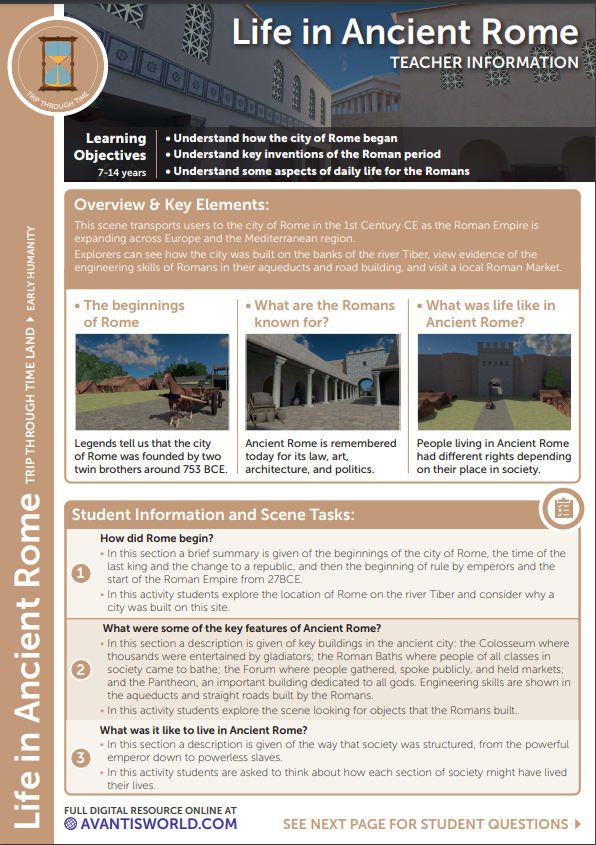 Loading...
Loading...
Initial language selection is based on your web browser preferences.
# Learning objectives 1: Understand how the city of Rome formed{.info} 2: Understand key inventions of the Roman Period{.info} 3: Understand some aspects of daily life for the Romans{.info} # How did the city of Rome form? {.objective .objective1} In this section, students will learn about the city's beginnings, the beginning of emperor rule, and the start of the Roman Empire in 27 BCE. They can also explore Rome's location on the River Tiber and consider why a city was built on this site. # What were some of the key inventions of ancient Rome?{.objective .objective2} Students can investigate some of the key buildings in the ancient city: the Colosseum, where thousands were entertained by gladiators; the Roman Baths, where people of all classes in society came to bathe; the Forum, where people gathered and spoke publicly, and held markets; and the Pantheon, an important building dedicated to all gods. The Romans built aqueducts and straight roads, which demonstrated their engineering skills. # What was it like to live in ancient Rome?{.objective .objective3} Here, students learn how society was structured, from the powerful emperor down to powerless enslaved people. Students are asked to think about how each section of society might have lived their lives. # Teacher Resources ### Download Teacher Notes [](https://avnfs.com/LvQrTLI_CNHH2jrlR1e9YvJCmKW8Rhlq3z59ax_6ffA?size=1008311&type=application%2Fpdf&name=Life%2520in%2BAncient%2BRome%2BTeacher%2BNotes%2B1.pdf) ### Student Quiz Answers Document [](https://avnfs.com/dGKp3cW9CshD73Z2I92vwl5OsHOUvGyfAyAeGu9af2M?size=537093&type=application%2Fpdf&name=Life%2520in%2BAncient%2BRome%2BTeacher%2BNotes%2B2.pdf) ### Download the Student Quiz Document [](https://avnfs.com/AFHvB3MWGorBMn8Ob3PMz-zGtQH4XSA0VBFQB6elvlY?size=96075&type=application%2Fpdf&name=Life%2520in%2BAncient%2BRome%2BTeacher%2BNotes%2B3.pdf)